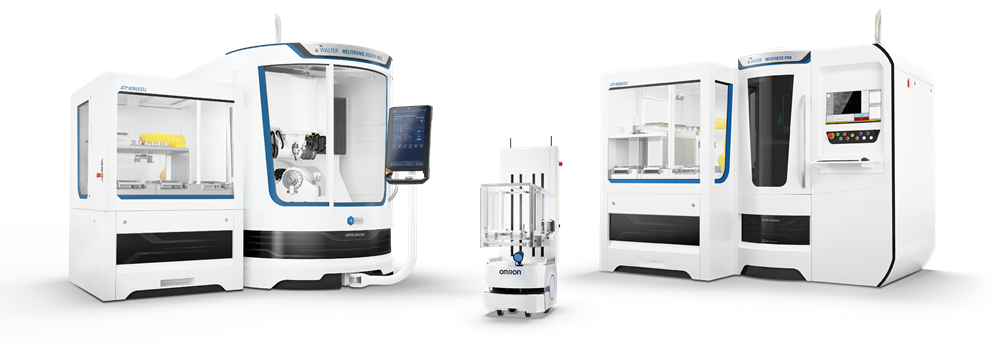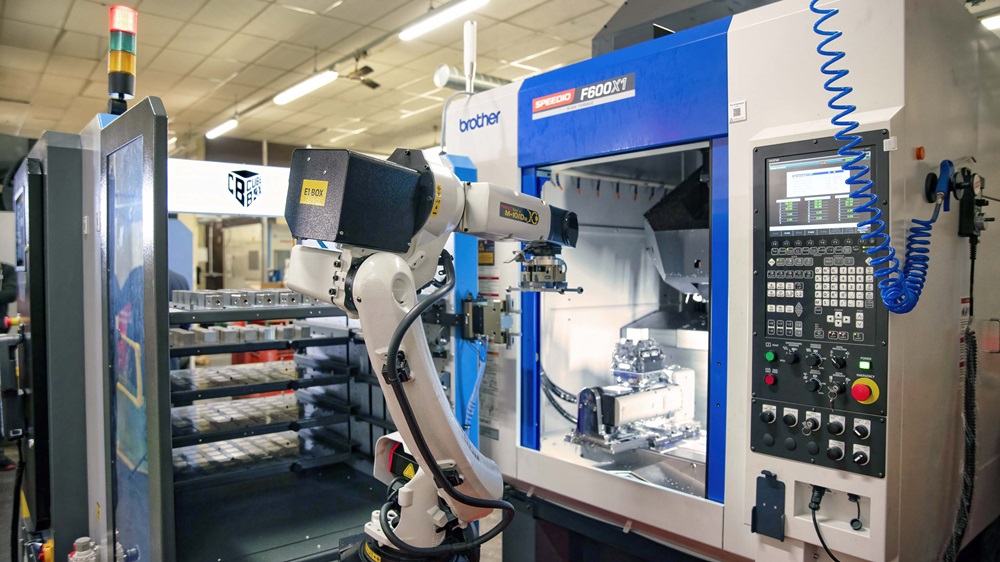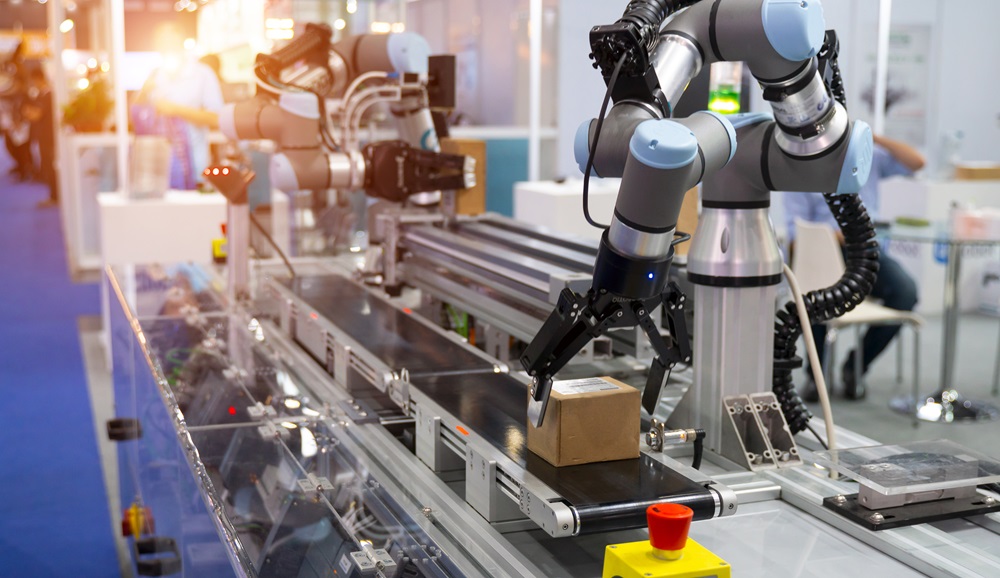With its new Automated Tool Production (ATP) system, Walter is offering a new automation system for tool handling in the manufacture and inspection of cylindrical cutting tools. The system networks tool production and measuring machines not only from Walter but also upstream and downstream machines from other system partners.
Available from Walter Ewag UK, a manufacturer of CNC grinding, erosion and measuring machines, the new ATP provides a higher degree of automation and thus delivers elevated levels of efficiency. ATP does not require additional floor space and is suitable for integration into existing tool manufacturing systems independent of current automation providers without any need to change system layouts.
System control is based on the Flames OPC-UA data model and comprises at least one robot cell accessible from the front (ATP Robocell) for automatic machine loading/unloading plus at least one autonomous, mobile transport robot (ATP AMR) for transporting workpiece pallets and individual parts between storage and processing stations. The data model also includes a standard communication model between the machines and ATP AMR, as well as a control system for higher-level data and process control.
ATP Robocell offers three access gates and therefore additional buffer spaces for production without waiting time or downtime. A separate removal station for the in-process exchange of individual tools between the measuring and production machine enables automatic correction and, as a result, closed-loop processing.
The ATP Robocell’s multi-range gripper contributes to the system’s flexibility by covering a large workpiece diameter range and providing the ability to exchange collets at the same time.
More information www.walter-machines.com



















